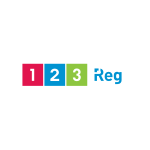Do you know that every colour on your website triggers certain emotions in people who visit your website? At least, colour psychology says so. Yes, colour psychology in website design is essential to making a website more engaging and attractive than you think. Knowing the psychology of how to use colours in web design can make your website more engaging for users, influence sales and improve conversion rates.
Sometimes, people have different colour preferences and prefer specific colours for particular businesses. Hence, understanding how to use a colour palette becomes essential to build a strong, relatable and successful brand. This article will explore the psychology of colours in web design.
Psychology of Colours in Marketing
Colour is one of the critical factors that influence consumers’ shopping behaviour. Consider it an essential aspect of your branding, design and marketing strategies. How you perceive a specific colour says a lot about your preferences and past, cultural and gender differences, and so on. Your choice of colour matters, from your logo to the shade of paint in your office.
We primarily based the psychology of colours in marketing on our preference, i.e. how it makes people feel. It comes from how you experienced it as children and during the transition phase into adulthood. While no proven colour boosts conversions or drives sales more effectively than others, colour psychology affects how a brand can make itself stand out.
Free Guide: How to Identify the Most Suitable CMS for Your Business Website!
How to Use Colours in Web Design
Web developers and designers who regularly interact with websites and perform testing of high-converting landing pages know how a particular colour can influence a client’s decision. A digital marketing specialist understands how colours evoke subconscious reactions and emotions and can affect decision-making.
- White
White can be blended with any other colour. However, it doesn’t go well with CTA (call-to-action) buttons and other interactive elements. It doesn’t attract the user’s attention. White works well for designing selling sites. When you create single pages of predominantly white colour, visitors’ attention gets focused on the necessary details.
- Black
There’s no proof of the effectiveness of black CTA buttons, as they are rarely used. For single-page sites, black brings good results if it’s used dominantly. However, the complementary colours must be chosen correctly. Black makes other colours appear brighter. But black can sometimes feel heavy. That’s why a professional website designer balances it out with other lighter colours.
Black is a colour of power and authority. But It’s also associated with some negative beliefs in some cultures. So, it’s essential to use it carefully. You should consider hiring a reliable website design agency with web design experience to use for your business website.
- Yellow
Yellow can be used for brands that want to stand for vigour and playfulness. Yellow logos immediately grab the attention and, as a rule, are remembered and recalled. The warning property helps to highlight notifications and footnotes on websites correctly.
- Orange
There’s a myth that green is the top colour for the “Add to Cart” or “Buy” buttons. However, Amazon, the largest online shopping platform, uses orange. In practice, orange performs much better when analysing call-to-action (CTA) buttons than green. Orange is also used on websites if a brand is associated with creativity.
- Blue
Blue is best for financial industries. People associate your business with being loyal if it has blue among its colours. Blue is also used by service-based industries such as software, information products, consulting and web design services. Since blue is associated with trust, it’s often used to brand health products.
Blue has a positive influence, but there are cases where it’s not recommended for use, such as food-related brands. That’s because blue is hardly found in natural products. So consumers can’t relate to it subconsciously. If you’re not associated with the food industry and want to win the trust of your target audience, combine blue with white for your websites and promotional materials.
- Green
Often used in designing buttons. Despite the colour orange being a strong competitor, green was ahead of it in some cases. You can use green for branding to focus on purity and aesthetics. At times, green can help you create something unique. The best web designers can help you use green in many different ways for various purposes.
Final Thoughts
Whether designing a new website or revamping the existing one, choosing the right colour palette is essential. Research shows that colours influence a customer’s buying decisions.
If you’re confused about choosing the right colour combinations for your website, consider hiring Telsa Media, the affordable and best web design company in the UK. They provide outstanding web design services at a low cost and design unique and attractive websites that stand out from your competitors and represent your business the best.
Their trusted web designing experts create designs that soothe eyes and effectively drive conversions. They ensure that your online presence has a website with colours that attract, engage and convert.
Also read: Stay ahead in 2024: key web design trends UK businesses should embrace!

